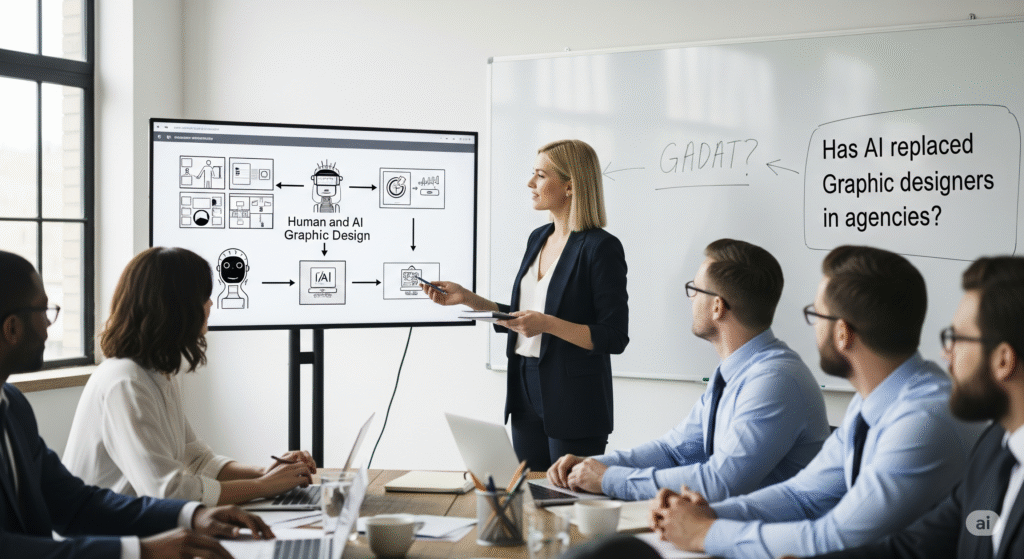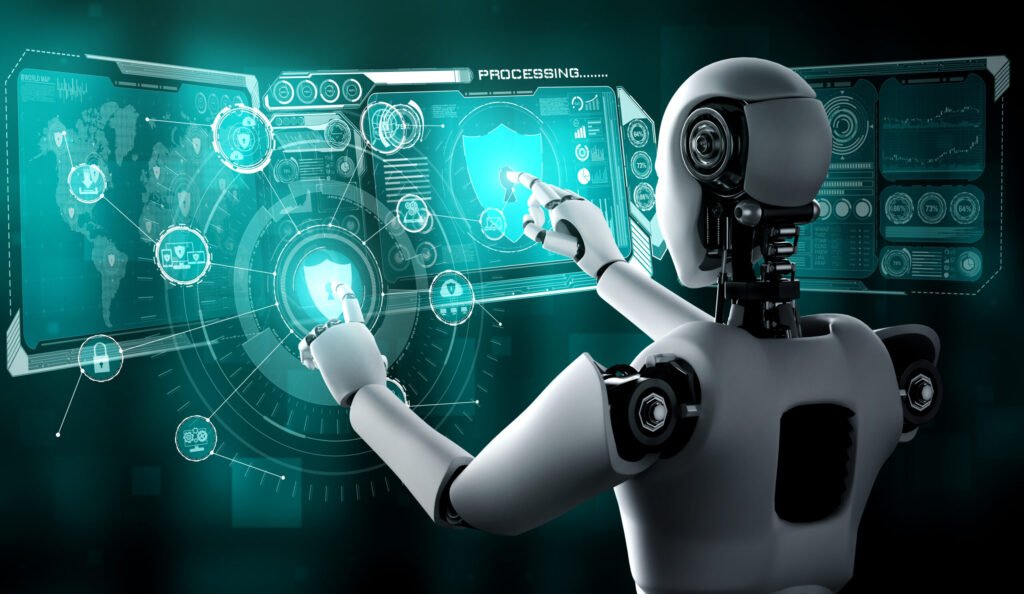vIntroduction
With the rise of artificial intelligence (AI) tools like DALL·E, Midjourney, and Canva’s Magic Design, a burning question has emerged in the creative industry: Has AI replaced graphic designers?
From automated logo generators to AI-powered design templates, agencies are embracing AI for speed and efficiency. But does this mean the end of human creativity in graphic design? In this blog, we dive into how AI is transforming the role of designers, what tasks it can automate, and where the irreplaceable human touch still matters.
The Capabilities of AI in Graphic Design
AI tools today can:
- Generate logos and illustrations in seconds
- Remove backgrounds or enhance images automatically
- Suggest color palettes and layouts based on brand input
- Create social media graphics with minimal user input
- Replicate design trends using neural style transfer
✅ Examples:
- Canva AI assists non-designers in creating polished visuals.
- Looka or Tailor Brands generate logos and branding kits instantly.
- Adobe Firefly and DALL·E generate image content based on text prompts.
These tools are particularly helpful for:
- Small businesses with no design team
- Agencies with high-volume, low-budget clients
- Rapid A/B testing of creatives
What AI Can’t Do (Yet)
Despite its prowess, AI lacks:
1. Deep Brand Understanding
AI can mimic trends but lacks the human intuition to align design with brand tone, emotion, culture, and long-term vision.
2. Original Creativity
While AI can remix and generate variations, it still relies on data. It doesn’t innovate the way a human does—like inventing a new style or interpreting abstract ideas into visual narratives.
3. Strategic Design Thinking
Designers understand:
- Business goals
- Customer psychology
- Cross-platform consistency
- Accessibility and usability principles
AI currently lacks the strategic foresight to craft campaigns with deeper brand impact.
Current Role of AI in Design Agencies
Instead of replacing designers, AI has become a creative assistant in agencies. Here’s how it’s used:
- Concept Development: Designers use AI to rapidly prototype ideas.
- Repetitive Tasks: Automating resizing, formatting, background removal, etc.
- Inspiration: Mood boards, layouts, font pairings via AI tools
- Speed: Quick turnaround for pitches or social content
- Efficiency: Reduces dependency on stock libraries
Agencies are also saving time and reducing operational costs by delegating low-level tasks to AI while letting designers focus on high-impact, client-specific work.
Designer + AI = Creative Superpower
Think of AI as a design partner, not a replacement.
Human designers who learn to leverage AI tools become exponentially more productive and valuable. They can:
- Spend less time on mundane edits
- Focus on big-picture storytelling and strategy
- Create data-informed, user-centric visuals faster
Just like digital tools didn’t replace artists but expanded their toolkit, AI is redefining, not eliminating, the designer’s role.
Conclusion
So, has AI replaced graphic designers in agencies?
No. But it has changed the game.
AI is a powerful tool that accelerates design processes, but human creativity, emotion, and strategy remain irreplaceable in branding and storytelling.
Agencies that embrace AI while upskilling their designers will outperform those who resist change. The future belongs to hybrid teams—designers enhanced by AI.
Grow Smarter with TechsterTech
Want to explore AI-powered branding or build visual campaigns faster?
TechsterTech.com helps startups and agencies integrate AI tools into creative workflows—without losing the human touch. Let’s build your brand the smart way.



